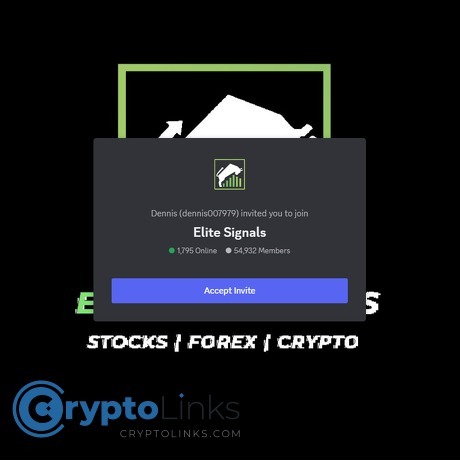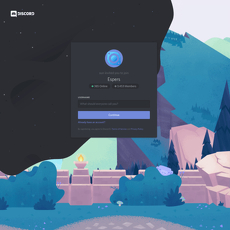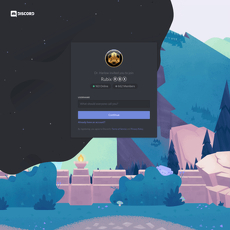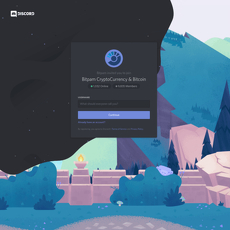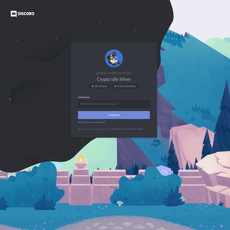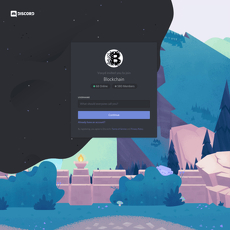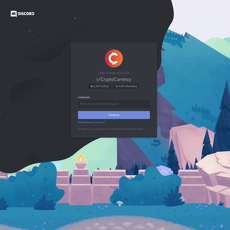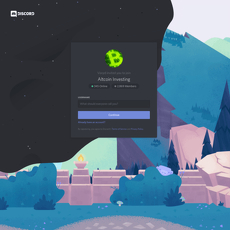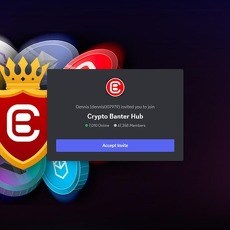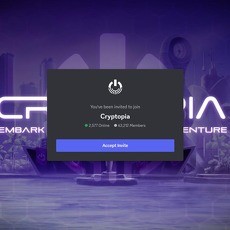Elite Crypto Signals Review
Elite Crypto Signals
discordapp.com
Elite Crypto Signals Review Guide: Everything You Need to Know + FAQ
Can a crypto signals Discord actually make you a better trader, or is it just another monthly fee that slowly bleeds your bankroll?
I’ve spent years testing crypto communities, tools, and signal servers to separate helpful, structured services from noisy hype machines. In this guide, I’ll show you how to judge whether Elite Crypto Signals is worth your time, what to look for before paying, and how to protect yourself while you test.
My promise is simple: help you avoid costly mistakes, save hours of guesswork, and give you a no-nonsense checklist to review this server fairly.
The real problems traders face with signals groups
Signals servers can look polished yet still fail you where it matters: clarity, timing, and risk. Here’s what I see most often when people message me after they’ve been burned:
- Vague entries and exits: “Buy between 0.072–0.075, TP1-TP4, SL dynamic.” That range can be 4% wide on a fast-moving alt. If your entry isn’t precise, your risk/reward isn’t either.
- Late alerts and slippage: An alert pings after a breakout candle. By the time you click, price has moved 1–2%. If your stop is fixed, your risk just ballooned and the setup’s edge may be gone.
- Risky leverage calls: “20x scalp” with no position sizing examples. Even a 0.5% adverse move can wipe out a chunk of your account if you’re sizing blindly.
- Win-rate bragging without context: “80% wins!” but losers are -3R and winners are +0.5R. You can “win” a lot and still lose money. That’s not performance; that’s marketing.
- No verified record: Only screenshots of winners posted after the fact. No time-stamped logs, no third-party tracking, no full spreadsheet of entries/SL/TP with R-multiples.
- Pushy VIP upsells: Constant FOMO: “Last chance for 50% off VIP!” while free channels stay light on quality. If value is real, high-pressure tactics aren’t needed.
- Unclear refunds and billing: Crypto-only payments via random processors and vague cancel terms. If it’s hard to cancel, it’s easy to regret.
- Chat noise and hero worship: Channels that shout “send it” on every green candle—little discussion of invalidation, context, or risk.
Two quick examples I’ve seen play out again and again:
- The CPI spike trap: Macro news hits, BTC jumps 2%. A short signal arrives a minute late. By the time you enter, volatility compresses, your stop gets pinged, and the log shows a “breakeven” after the poster edits the plan. Your account doesn’t get to edit fills.
- The altcoin slippage tax: A small-cap moves 3% on low liquidity. The call posts “market buy.” You get filled near the wick top; TP1 hits for a tiny gain on paper, but fees and slippage turn it into a net loss for you.
If a server won’t show time-stamped alerts tied to a public log with entries, SL, TP, and R-multiples, assume the best trades are being cherry-picked.
What I’ll help you solve in this review
Here’s what you can expect to walk away with:
- How to verify claims: What real evidence looks like (and how to spot fake “proof”).
- What performance metrics matter: Average R per trade, drawdown, and consistency beat raw win rate.
- How to benchmark Elite Crypto Signals: Simple ways to compare it against other top Discords based on your schedule and experience.
- A safe testing process: Paper trading steps so you can measure slippage, fit, and actual value before paying a cent.
If you like specifics and hate fluff, you’ll be right at home here.
Why trust me and how I test servers
Over the years, I’ve reviewed hundreds of crypto tools and communities. The framework I use is simple and repeatable, and you can copy it to vet any signals group:
- Transparency: Is the team visible? Are methods explained? Are losses acknowledged?
- Signal quality: Clear entries, stops, and take-profits, with time-stamped alerts you can verify.
- Risk guidance: Position sizing examples, invalidation levels, max daily loss, when to skip trades.
- Results tracking: Public log with entry/SL/TP and R-multiples, not just “green checkmarks.”
- Member feedback: Honest chat about slippage and missed fills, not just “to the moon.”
- Pricing fairness: Straightforward billing, easy cancellation, no shady off-platform payments.
- User experience: Clean channel structure, helpful mods, minimal noise in signals feeds.
A few data-backed principles guide this approach:
- Risk-adjusted returns beat win rate: A strategy with 45% wins can outperform an 80% win strategy if the average winner is bigger and losses are capped.
- Slippage is real edge decay: On fast markets, 0.2–0.6% slippage can flip a marginal scalp from +0.3R to negative after fees.
- Consistency beats hot streaks: What matters is a stable process over months, not one explosive week of screenshots.
Ready to see what Elite Crypto Signals actually offers, how it’s structured, and what stands out the moment you join? That’s next—let’s look inside before you risk a dollar.
What is Elite Crypto Signals? A quick overview
Elite Crypto Signals is a Discord server centered around crypto trading alerts with a VIP membership that promises “premium” signals and quicker notifications. Expect a steady flow of BTC/ETH calls, a mix of altcoin setups, and messages that usually include entries, exits, stop-loss, and multi-target take profits. The pitch is simple: faster, clearer signals for VIPs, plus some extras like analysis, summaries, or tools.
I care about how actionable those alerts are in real time. Entries and targets are helpful, but what really matters is how clear the rules are and whether you can actually execute at the prices shared—especially when the market moves fast.
“A signal isn’t a plan until risk, timing, and invalidation are written down.”
Channels and content you’ll likely see
The layout evolves, but most of these servers follow a similar structure. Here’s what you’ll probably find inside and how it tends to be used:
- Free signals or market chat: Occasional alerts to showcase the style, plus general discussion.
- VIP signals: Main feed for entries, stops, and multiple TPs. Sometimes split by spot vs. futures.
- Scalps and swings: Faster trades for intraday (scalps) and multi-day moves (swings). Labeling matters—your schedule needs to match the channel you follow.
- Analysis/charts: Quick TA snapshots with levels. Good servers show the logic, not just the arrows.
- Results or wins: A record of past calls. What you want to see is losses too, not just a highlight reel.
- Education or FAQs: Short explainers on risk, exchanges, or how to size positions.
- Support: Ticketing or a help desk channel for billing and onboarding questions.
Typical message formats look like this (illustrative example):
- Pair: BTCUSDT (Futures)
- Entry: 62,450–62,900
- Stop: 61,780 (hard stop)
- TPs: 63,400 / 64,200 / 65,500
- Notes: Trend pullback into 4H demand; reduce size around major news; no entry if price gaps through zone
That last line is underrated. Clear “do not trade if…” notes often separate a disciplined call from noise. Research on retail performance shows that overtrading and chasing entries wreck results; in traditional markets, Barber & Odean (2000) found higher trading activity often leads to worse returns. In crypto, where volatility and spreads can widen fast, this effect is even louder.
Pricing and tiers (free vs VIP)
Most crypto signals Discords use a freemium model:
- Free tier: Limited alerts, public chat, and a taste of analysis.
- VIP tier: Full access to signals, faster pings, more pairs (including alts), and sometimes bonus tools or weekly recaps.
Before paying, check inside the server for:
- Exact VIP benefits: Which channels unlock? Are there extra scalps, swing recaps, or indicator access?
- Pricing cadence: Monthly is safer for testing than long-term commitments.
- Trials or discounts: Time-limited trials, first-month promos, or bundles might be available—read the fine print.
- Billing and cancel terms: Where you pay, how you cancel, renewal dates, and refund rules. Take screenshots of terms before you subscribe.
If you see “no-refund” language and off-platform payments with vague terms, treat it like a non-refundable purchase. Ask questions in support before you commit.
Who runs it and do they show their face?
Faces aren’t required, but visibility helps. I look for:
- Named admins or analysts: Handles you can verify across platforms like X or YouTube.
- Posting cadence: Consistent updates during active market hours, not just when trades hit targets.
- Explainers: Short reasoning with charts: “Why this level? What invalidates it?”
- Accountability: Weekly or monthly wrap-ups that acknowledge both wins and losses.
- Support clarity: A reliable way to reach a human when billing or access issues pop up.
Bonus signals of seriousness include live chart reviews, AMAs, or screen-shared sessions. Even occasional transparency boosts confidence. On the flip side, if everything is faceless and all you see are “100% win streak” posts, that’s a feeling you shouldn’t ignore.
What stands out at first glance
Elite Crypto Signals leans into premium alerts with defined entry/exit points and VIP perks. That’s common. What I pay attention to is whether the alerts are actually usable:
- Execution speed: Are pings early enough to catch entries without chasing?
- Clarity: Is the stop-loss hard or soft? Are partial TPs explained? Is there an invalidation event?
- Slippage on fast moves: Do ranges account for volatility, or do entries print after the move is over?
- Tracking: Is there a public log with time stamps and both wins and losses, not just screenshots?
A quick way to feel this in your own skin is to time the delay between a ping and price touching the entry. On low-liquidity alts, even a 20–40 second delay can change your fill meaningfully, especially during news or when spreads widen. Data firms have shown how crypto liquidity thins during volatility spikes—your experience will confirm this the first time a candle rips through your level.
Signals can motivate, but they can also tempt you into trades you wouldn’t normally take. Keep this in mind:
“You don’t need more trades. You need clearer trades.”
So is this server the real deal or just another screenshot factory? In the next section, I’ll show you the exact way I separate clever marketing from trustworthy process—starting with time-stamped proof and risk-adjusted results. Ready to look under the hood?
Is Elite Crypto Signals legit? How I check trust the smart way
Legit doesn’t mean “always green.” It means the process is transparent, claims are realistic, and results can be verified without mental gymnastics. Here’s exactly how I sanity-check a signals server before I risk real money.
“What gets measured gets managed. In trading, what isn’t timestamped is usually imagined.”
Track record: proof or just screenshots?
Screenshots are theater. I want a paper trail I can match to the market.
- Time-stamped alerts: Click the Discord message timestamp to get a permalink. Check that the alert was posted before the price touched the entry. Cross-check the candle time on TradingView (UTC). If alerts magically line up after the fact, that’s a hard no.
- Public results log: A simple Google Sheet is fine if it’s complete. I look for columns like: pair, direction, entry zone, stop, TP1/TP2/TP3, time posted, time filled, exit method, and R-multiple result. Bonus points if they publish a distribution of R outcomes, not just an average.
- Third-party or automated tracking: Webhooks to a public log or an automated sheet via Zapier show intent to be accountable. “We’re working on it” for months usually means “we’re not.”
- Partial fills and missed entries: If they call BTC long at 60,000 with SL 59,400 and TP1 60,400:
- If price taps 60,000 for 0.2s and rips, do they count it as filled for everyone? Or do they mark it “missed” unless a reasonable fill window was available?
- If TP1 hits but the alert streamed into Discord 30 seconds late, do they adjust fill price or exclude it? Slippage is real; I want to see it acknowledged.
- No backfill games: If SL is moved after invalidation, or if they count TP hits after stop was tagged, the log’s integrity is gone.
Why I’m picky: research like Bailey et al. (2014) on backtest overfitting shows how easy it is to “prove” success after the fact. If results aren’t independently time-linked, you can’t trust them. See: Probability of Backtest Overfitting (SSRN).
Win rates vs risk-adjusted returns
A shiny win rate can still bleed you out. I focus on expectancy and drawdowns, not just how often trades hit TP.
- Expectancy: Do they share average R per trade? Example: A 70% win rate with +0.6R average wins and −1.2R average losses is negative expectancy. A humble 45% win rate with +2.0R wins and −1.0R losses is excellent.
- Scaling logic: If they scale out at TP1/TP2/TP3, how do they calculate the weighted result? Counting all TPs as full-size exits inflates returns. I want to see a clear formula.
- Max drawdown: Show me the worst peak-to-trough in R or percentage over the last 3–6 months. If it’s not tracked, they’re not managing risk—you are.
- Position sizing guidance: Do they provide concrete examples? “Risk 1% per trade; if SL is 1.5%, position size = account × 1% ÷ 1.5%.” Without sizing rules, win rate talk is noise.
Take it from the data world: when people search for edges, p-hacking happens. If a group won’t discuss risk-adjusted outcomes, it probably leans on win-rate theater. For more context, see Harvey & Liu (SSRN) on false discoveries in finance.
Billing, refunds, and cancel policy
A legit operation makes it easy to leave. That’s a trust signal on its own.
- Payment rails: Stripe, Patreon, Gumroad, or similar with a customer portal are safer. Random crypto wallet, Cash App to a handle, or “friends and family” payments are red flags.
- Auto-renew clarity: Is renewal frequency obvious? Is there a one-click cancel link? I look for a portal where I can cancel without talking to a human.
- Refunds: “7-day guarantee” means nothing if it requires five hoops and a notarized letter. I want written terms: what qualifies, response time, and who handles it (processor vs. staff).
- Commitment length: Monthly beats 3–12 month prepay while you test. If they push long-term up front with pressure tactics, that’s not member-first.
Community quality and moderation
The chat tells you who they are when no one’s watching. I look for:
- Reality over hype: Loss posts, post-trade reviews, and “invalidated, moving on” messages. If every call “moons,” something’s off.
- Active, fair mods: Spam-free channels, no cold DMs allowed, and clear rules about risk. Slow mode during volatile events is a sign of care, not control.
- Pre-trade structure: Plans posted before the move are worth more than post-trade victory laps. Charts with invalidation levels show real thinking.
- Member wins ≠ server wins: If most “wins” are anonymous PnL screenshots with no link to a public signal, I ignore them.
Want a gut-check stat on behavior? Barber & Odean’s classic work shows overtrading crushes returns for most retail traders. Healthy communities fight FOMO; they don’t fuel it. Reference: Trading Is Hazardous to Your Wealth (SSRN).
Quick red flags checklist
- “Guaranteed profits” or “we never lose.”
- Secret backtests but no public, time-stamped forward log.
- Only posting wins; losses vanish into “volatile markets.”
- Pressure DMs: “VIP price doubles tonight.”
- No stop-loss guidance or vague “manage risk” platitudes.
- Counting partial entries as full positions or TP hits after stops.
- Payment only via untraceable crypto wallets with “no refunds.”
If you’ve read this far, you can probably spot fluff from a mile away. The next puzzle is where the rubber meets the road: what should a good signal actually include, how do smart groups teach risk, and how do you protect yourself from slippage and wipeouts when alerts hit at full speed? Keep going—want to see the exact message template I expect from a proper signal and the risk rules that save accounts during bad weeks?
Signals, strategy, and risk: what to expect and how to protect yourself
Signals that actually help you aren’t just “buy here, sell there.” They give you a repeatable setup, a clear invalidation point, and a plan for what to do when the market doesn’t behave. That’s how I judge any crypto signals group, including Elite Crypto Signals.
“Amateurs ask ‘how much can I make?’ Pros ask ‘how much can I lose?’”
Trade styles and timeframes
Most crypto signals communities blend scalps with slower swing trades. The key is knowing what playbook they’re running and when it’s off.
- Scalps (1–30 min): Quick, momentum-driven moves on BTC/ETH and liquid alts. Great in trending or high-volatility windows, dangerous during chop or illiquid hours (late weekends, low-volume Asia sessions).
- Swings (4H–Daily): Breakouts from consolidation, retests of key levels, or mean-reversion into major support/resistance. Better fit if you can’t stare at charts all day.
- Trend vs range: Ask if they sell tops/buy dips in ranges or if they trend-follow with higher highs/lows. Good signals call out what invalidates the trade.
Here’s the kind of clarity I expect from a premium alert:
- Example: BTC short 66,250–66,400, SL 66,780, TP1 65,500, TP2 65,050, TP3 64,400. Risk 0.5–1%. Skip during CPI/FOMC. Move stop to breakeven after TP1.
- Why it matters: I see the zone, the invalidation, the risk, and when to stand down. That’s usable in real time.
If a server can’t state what kills the setup (e.g., a 15m close above the level, a failed retest, or a news spike), the signal becomes a coin toss.
Risk management they should be giving you
Without risk rules, even a strong win rate can bleed out. Studies on position sizing and risk of ruin (see Van K. Tharp’s R-multiple framework and Ralph Vince’s work) show that controlling loss size has more impact than chasing win rate. I want to see:
- Hard stop-loss: Written in the alert. Market or stop-limit, not a “mental stop.”
- Position sizing example: How to size based on account risk, not leverage.
Quick math: If I risk $100 per trade and my stop is $50 away per coin, I buy 2 coins. Risk ÷ stop distance = size. Leverage only adjusts collateral, not risk. - Max daily loss: 1–3R or a fixed % (often 1–2% of account). When that’s hit, stop. Overtrading crushes expectancy (see Barber & Odean, 2000).
- Skip conditions: CPI/FOMC, exchange outages, thin order books, spread spikes, or when you’re late and slippage eats the edge. Crypto’s fast moves can add 0.1–0.4% slippage on alts—enough to turn a 1R into 0.6–0.8R after fees.
- TP and break-even logic: Partial take-profits, then stop to breakeven or trail. Consistency beats hero trades.
Win rate is a headline. Expectancy pays the bills: E = (win% × avg win R) − (loss% × avg loss R). If alerts don’t help you estimate R-multiples, you’re guessing.
Backtesting, forward testing, and consistency
Backtests are useful, but forward-tested, time-stamped calls are the real proof. I look for:
- Time-stamped logs: Signals posted before the move, with a public running sheet that includes entry, SL, all TPs, and R results. Bonus points for a simple Google Sheet anyone can read.
- Enough sample size: A hot week means nothing. I want months of data, 100+ trades ideally. Statistically, the larger the sample, the more reliable your expectancy measure becomes.
- Transparency on misses: Did the signal miss the entry? Partial fill? Slippage turned a win into a scratch? Log it. Cherry-picking destroys trust.
If Elite Crypto Signals (or any server) shares only screenshots of winners, I treat results as unverified until I see a full log. Screenshots don’t equal a strategy.
Tools and education value
Great alerts teach while you trade. Even a short explanation helps you stop copying and start understanding.
- Chart markups: Levels, liquidity zones, trendlines, or key moving averages. A quick TradingView link is fine.
- One-liner logic: “Shorting lower high into supply; invalidation = 15m close above.” It takes five seconds and changes how you see the setup.
- Post-trade notes: What worked, what didn’t, and what to adjust next time. A 30-second post-mortem compounds your skill.
- Risk-focused tips: ATR-based stops, how to avoid chasing, and when to switch off during news. This is the difference between signal spam and a real edge.
I also check if they mention fees and funding. On perpetuals, taker fees and funding drift can quietly shave 0.1–0.3R per trade. Signals that acknowledge costs are usually more realistic.
How to test safely (my go-to process)
Here’s the exact process I use before I pay for any VIP:
- Paper trade first: Use TradingView’s paper trading or an exchange testnet (e.g., Binance Futures Testnet, Bybit Testnet).
- Track 20–30 trades: Log date/time, pair, entry, SL, TPs, result in R, slippage, and whether you could realistically execute given your schedule.
- Size by risk, not “10x”: Pick a fixed risk per trade (0.25–1% of account is common). Then compute size: risk ÷ stop distance.
- Pre-define a stop session: If you hit −2R on the day, stop. If you miss an entry by more than half the stop distance, skip the trade.
- Review weekly:
- Expectancy (E) above 0.2R? Keep testing.
- Max drawdown tolerable for you? If a −4R week breaks your sleep, reduce risk.
- Execution fit? If most alerts ping while you’re in meetings, the best signals in the world won’t help.
If after 30 trades the process is clear, the logs are honest, and your expectancy is positive (even modestly), then consider VIP. If not, no hard feelings—move on before fees eat more than the signals give.
Sample log format you can copy (I keep this in a simple sheet):
- Date/Time (UTC)
- Pair and direction
- Entry/SL/TPs
- Filled? (Y/N/Partial)
- Result in R (net of fees/funding)
- Slippage (bps)
- Notes (late entry, news spike, etc.)
One last sanity check I apply: if I removed the labels, could I still recognize the strategy on a blank chart? If the answer is no, the “edge” is likely just noise.
Curious how this approach stacks up against other popular crypto Discords—especially if you work a 9–5 or want more education than alerts? I’m about to compare styles side by side so you can pick the one that actually fits your life. Which matters more to you right now: fewer, higher-conviction swings or a stream of fast scalps?
How Elite Crypto Signals compares to other popular crypto Discords
There isn’t a single “best” crypto Discord—there’s the one that fits your lifestyle, risk tolerance, and how you like to learn. I look at two things first: do the alerts match my schedule, and can I understand the logic behind the trades? If either answer is no, I move on.
“The best signals aren’t the ones with the loudest wins—they’re the ones you can actually execute.”
Popular names people ask about
Here’s where Elite Crypto Signals typically sits relative to communities a lot of traders bring up:
- r/CryptoCurrency — Free, massive, and news/sentiment heavy. Great for keeping a finger on the market’s mood. Not built for precise, time-stamped trade alerts. Expect noise.
- LuxAlgo — More tooling + education than raw signals. If you like to chart your own trades using indicators and want a community to bounce ideas off, this leans your way. Less “copy this trade now,” more “here’s how to find your own edge.”
- Cracking Crypto — Education-first with structured TA, streams, and breakdowns. If you want the why behind trades and you’re patient, this can build skill. Signals exist, but teaching is the star.
- Botos Trading Academy — Commonly discussed among bot/automation fans. Think strategy templates, rules, and sometimes automation workflows. If you prefer “systems” over manual alerts, this lane might fit better.
Where does Elite Crypto Signals fit? It’s more on the alert-heavy side—entries, SL, TP levels, often with multiple targets and VIP speed/coverage perks. That appeals if you want ready-to-execute setups. Just remember: without clear rules for risk and timing, fast alerts can turn into fast mistakes.
“Who has the best crypto Discord?”
I always answer with a question: what can you actually follow consistently?
- Work a 9–5? Scalp-focused servers will ping when you can’t enter. Look for swing setups with hours/days of runway.
- New to trading? Go education-first. You’ll make fewer “I chased the wick” mistakes if you get the logic behind each level.
- Advanced and time-flexible? Alert-heavy groups can be useful if they include strict SL/TP and you can execute fast.
- Hate Discord noise? Prefer tooling communities where you set your own alerts from shared systems.
There’s also a behavioral piece here. Research shows retail traders who overtrade tend to underperform the market—FOMO and frequent switching kill returns. If a server triggers you to chase every candle, that’s a bad fit no matter the win rate. For reference: “Trading Is Hazardous to Your Wealth” (Barber & Odean).
What to compare side by side
When I size up Elite Crypto Signals against other groups, I run this simple checklist:
- Transparency of results — Do they keep a public, time-stamped log that matches Discord alerts? Can you see entries, SL, TP, and R-multiples?
- Clarity of entries/SL/TP — Are levels precise and updated if price moves? Are invalidation rules obvious?
- Risk guidance — Do they give position sizing examples, max daily loss, and when to skip trades (e.g., high-impact news)?
- Community vibe — Are losses discussed honestly? Are mods present during market hours? Is chat helpful vs hype?
- Cost vs what you’ll use — Will you realistically use 80% of VIP perks or just 10%? Pay for your actual workflow, not the brochure.
- Timezone fit — When do alerts drop? If “prime” alerts hit 3 a.m. for you, the server isn’t the problem—fit is.
Quick reality check: If an alert posts “BTC long 32150, SL 31800, TP 32750/33200” and you see it a minute late during a momentum spike, your fill could be 60–120 points worse. That slippage can flip a +1R into breakeven or worse. No group is immune—your availability matters as much as their accuracy.
Picking an alternative if this isn’t a match
- Want structured learning? Try education-first communities like Cracking Crypto. Fewer “now” trades, more “repeatable process.”
- Want tools over hand-holding? Check LuxAlgo or similar indicator-focused groups and use their signals as filters, not triggers.
- Want free-only and slower pace? Use r/CryptoCurrency for sentiment and macro threads, then paper trade ideas you can schedule.
- Want automation or rules-based systems? Look for bot-integrated servers or academies oriented around fixed strategies you can test and iterate.
If you’re leaning toward Elite Crypto Signals because you like ready-to-trade alerts, the next step is making sure you set it up correctly so you don’t miss entries or pay in a way that’s hard to cancel. Want a simple, safe setup that protects you from FOMO and bad fills? In the next section, I’ll show exactly how I join, configure alerts, and paper trade the first 20–30 setups before spending a cent—sound good?
Joining, setup, and getting the most out of it
Joining via invite link safely
Use the official invite: https://discord.gg/ubHRPpbN. Once you’re in, double-check you’re in the right place: server name, logo, and mod/admin list should be consistent across announcements and the welcome channel.
Protect yourself from impersonators and “VIP deal” DMs:
- Turn off DMs from server members: Right‑click the server icon → Privacy Settings → disable “Allow direct messages.”
- Never pay someone who DMs you first. Real mods ask you to open a ticket or message a clearly listed support handle inside the server.
- Enable 2FA on Discord: User Settings → Password & Authentication → Two‑Factor Authentication. It takes one minute and kills most takeover risk.
Pro tip: If a “staff” DM offers a one‑time VIP discount or asks you to send crypto to “secure your spot,” assume it’s fake until verified in a public support/tickets channel.
Payments and “Does Discord accept crypto?”
Discord itself doesn’t accept crypto. Many groups use third‑party processors or gift cards. If you pay with crypto, treat it like a cash payment—final and usually non‑refundable.
- Ask for a clear invoice and terms: billing period, renewal date, refund/cancel policy.
- Start monthly, not yearly: you’re testing fit and execution first.
- Avoid “friends and family” payments: they reduce your protection if something goes wrong.
- Keep proof: screenshots, invoice IDs, transaction hashes. If support is slow, this is your leverage.
Behavioral finance research shows that sunk cost bias pushes people to “stick it out” after a big upfront payment. Smaller, cancellable plans keep your decisions rational.
Onboarding checklist I recommend
- Read the rules and risk disclaimers. You want to know exactly what they do—and don’t—promise.
- Prune your channels: mute chat/noise; keep signals, announcements, and support on.
- Set reliable alerts:
- Server Settings → Notification Overrides → enable alerts for the signals channel and roles (e.g., @VIP Alerts).
- On iOS/Android, allow Discord in Focus/Do Not Disturb exceptions.
- Create backup price alerts on TradingView at the entry zone so you don’t miss moves if a ping is late.
- Timezone sync: confirm when signals usually drop. If most alerts hit while you sleep, don’t force it—skip or use limit orders only.
- Paper trade first (20–30 setups): no capital at risk while you test fit and execution.
Simple paper-trade tracker template (copy to a sheet):
- Date / Pair
- Direction (Long/Short)
- Entry / Stop / TP1–TP3
- Risk per trade ($ or %)
- R-multiple (for a long: (TP − Entry) / (Entry − SL))
- Fill quality and slippage
- Outcome and notes (news, spread, latency)
Goal: After 20–30 trades, you’ll see the real pattern—win rate, average R, drawdowns, and whether the schedule fits your life.
A practical execution example
Say they post something like:
SOL/USDT Long
Entry: 142.50–143.00
Stop: 140.50
TP1: 144.40, TP2: 146.00, TP3: 148.50
Leverage: 3–5x suggested
Here’s how I’d handle it safely:
- Define risk first: I’ll risk $20 on this trade.
- Position size (spot or perps): distance from entry midpoint to stop is ~2.25. Position size = 20 / 2.25 ≈ 8.9 SOL (round to 9). Notional ≈ $1,285. With 5x, margin ≈ $257.
- Orders: place a limit in the entry zone, a stop‑market at 140.50, and staggered take profits at TP1–TP3. If price skips the zone, I don’t chase.
- Partial exits: take 30% at TP1, 40% at TP2, let 30% ride to TP3 with stop to breakeven after TP1. If volatility spikes on news, I pass or reduce size.
This keeps me consistent regardless of the coin or leverage. Winners scale; losers stay small.
Getting help when you need it
Before upgrading, test support:
- Open a ticket in the designated channel with a simple question about billing or timezones. Time the response.
- Check mod presence during active market hours. If nobody’s around when BTC moves, expect delays when you need them most.
- Ask a strategy question: “If price gaps past the entry, should I wait for a retest or skip?” The clarity of the answer tells you a lot about their process.
Managing expectations
Even great signal providers have losing streaks. What matters is your process during them.
- Set guardrails: 0.5–1% risk per trade while you’re testing; daily stop after 2–3 losses.
- Skip low‑quality conditions: thin liquidity, high spreads, or major events like CPI/FOMC/ETF decisions—spikes can blow through stops.
- Control slippage: prefer limit entries, pre‑place stops, avoid market orders during news candles.
- Don’t overtrade: research by Barber & Odean shows frequent traders often underperform due to behavioral biases. Fewer, higher‑quality setups usually win.
- Expect variance: Prospect Theory reminds us losses feel worse than gains. Keep sample sizes large enough to judge fairly.
Mindset upgrade: Judge the next 30 trades as a batch, not the next 3. Consistency beats hero trades.
Latency playbook so you don’t miss entries
- Prioritize pings: make the signals role “High Priority” in your device settings so alerts break through Focus/DND.
- Set price alerts at entry zones: TradingView or your exchange app as backup.
- Pre-plan OCO brackets: one‑click entry with attached stop and TPs reduces execution errors when price moves fast.
Make the server work around your life
- If you work a 9–5: stick to swings with clear invalidations and pre‑set limits; skip scalps that need constant screen time.
- If you’re new: paper trade only until you can log and explain each setup in one sentence.
- If your timezone is off: consider alerts that fire during your morning/evening window only—consistency > catching every move.
Got the setup, alerts, and risk plan locked in? Good. But what about the burning questions everyone asks—like whether this server is truly legit, the best way to test it, and how payments really work without headaches? That’s exactly what I answer next in the quick-hit FAQ. Ready for straight answers?
FAQ: quick answers to what everyone asks
Is Elite Crypto Signals Discord legit?
It runs a common model: public chat plus VIP signals with stated entries/exits. Legitimacy hinges on proof and process, not promises.
- What I’d want to see: time‑stamped alerts that match a public results log, unedited message links, clear SL/TP, and an R-based performance sheet (not just “win rate”).
- Simple self-check: take the last 10–20 posted trades, calculate R for each (profit or loss divided by risk to SL), then average them. If the average R is negative, the fancy win rate means nothing.
- Red flags: only posting wins, “guaranteed” returns, no stop-losses, pressure selling, or payments pushed off-platform with no refund terms.
Bottom line: if you don’t see verifiable logs and clear risk rules, treat it as unverified and paper trade only.
Who has the best crypto or trading Discord?
There isn’t a universal “best.” The best one is the one you can execute. If you can’t catch alerts in real time, even great calls won’t help.
- Busy schedule: pick slower swing-focused servers; scalps will be hard to follow.
- New to trading: look for groups that explain entries, invalidations, and risk—not just ticker spam.
- Advanced users: raw, time-stamped signals and minimal chatter can be ideal.
Quick reality check: independent research on active retail traders shows that overtrading and slippage erode returns (see Barber & Odean’s work on retail trading outcomes). In plain English: execution beats theory. Match the server’s style and timing to your life first.
Does Discord accept crypto for payment?
No. Discord itself doesn’t process crypto payments.
- If a server takes crypto via a third party: treat it like cash—refunds are rarely guaranteed.
- Protect yourself: ask for a written invoice, refund/cancel terms, and renewal cadence. Screenshot everything.
- Safer testing: monthly, non-recurring plans via a provider with dispute options beat long prepaid deals.
What’s a safe way to test any signals group?
- Join via the official invite: https://discord.gg/ubHRPpbN. Mute noise; keep signal channels on.
- Paper trade 20–30 setups: log entry, SL, TP, fees, and slippage. Calculate R for each trade.
- Expectancy check: E ≈ (win rate × average win R) − (loss rate × average loss R). If E ≤ 0 after fees and slippage, pass.
- Risk while testing: if you must go live, cap risk at 0.25%–0.5% per trade and set a max daily loss.
- Execution fit: if you’re consistently late to entries or sleeping through alerts, it’s not a match—even if results look great on paper.
Tip: latency and slippage matter. On fast moves, even a 0.2%–0.6% slip plus taker fees can flip a small edge negative. Track it.
Conclusion: my take
Be curious, but act like a risk manager. Verify time-stamped results, look for R-based tracking, and check that support actually replies. Start free if possible, paper trade first, and only pay for VIP if it clearly fits your schedule and improves your edge. No signals group can replace position sizing and discipline—those are on you.
CryptoLinks.com does not endorse, promote, or associate with Discord servers that offer or imply unrealistic returns through potentially unethical practices. Our mission remains to guide the community toward safe, informed, and ethical participation in the cryptocurrency space. We urge our readers and the wider crypto community to remain vigilant, to conduct thorough research, and to always consider the broader implications of their investment choices.

